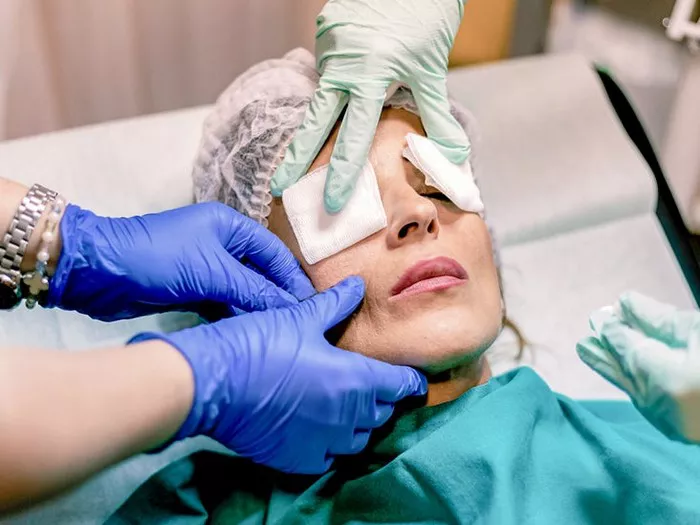Double eyelid surgery, also known as blepharoplasty, is a popular cosmetic procedure aimed at creating a more defined upper eyelid crease. While traditional surgical techniques involve the removal of excess skin and fat to reshape the eyelid, thread embedding double eyelid surgery offers a minimally invasive alternative. This procedure uses threads to create a double eyelid without the need for extensive incisions. However, like any medical procedure, it is essential to understand the potential side effects and considerations associated with thread embedding double eyelid surgery. In this article, we will explore the procedure, its benefits, and the possible side effects that individuals may experience.
Understanding Thread Embedding Double Eyelid Surgery
Thread embedding double eyelid surgery, often referred to as non-incisional double eyelid surgery or suture double eyelid surgery, is a technique that involves the use of specialized threads to create an upper eyelid crease. Unlike traditional double eyelid surgery, which requires incisions, removal of tissue, and sutures, thread embedding surgery is minimally invasive and typically performed under local anesthesia. Here’s how the procedure works:
Anesthesia: The surgeon administers local anesthesia to numb the eyelid area, ensuring that the patient remains comfortable throughout the procedure.
Thread Placement: Small incisions are made along the upper eyelid, and threads are inserted beneath the skin. These threads are used to create the desired double eyelid crease.
Adjustment: The surgeon adjusts the threads to achieve the desired crease height and shape. Once satisfied with the appearance, they secure the threads in place.
Healing: As the eyelid heals, the threads become encapsulated by the surrounding tissue, maintaining the newly created double eyelid.
Benefits of Thread Embedding Double Eyelid Surgery
Thread embedding double eyelid surgery offers several advantages over traditional surgical techniques, including:
Minimally Invasive: The procedure involves smaller incisions and less tissue manipulation, resulting in reduced scarring and a quicker recovery.
Local Anesthesia: Patients typically undergo the procedure under local anesthesia, reducing the risks associated with general anesthesia.
Shorter Recovery: Recovery time is often shorter, with most patients able to return to their regular activities within a few days.
Adjustable: The surgeon can adjust the threads during the procedure to achieve the desired crease height and appearance.
Natural Look: Thread embedding surgery aims to create a natural-looking double eyelid that complements the individual’s facial features.
Potential Side Effects and Considerations
While thread embedding double eyelid surgery is generally considered safe, individuals should be aware of potential side effects and considerations associated with the procedure:
Swelling and Bruising: Swelling and bruising are common after the surgery but usually subside within a week. Cold compresses can help alleviate these symptoms.
Discomfort: Some discomfort or mild pain may occur, but it is typically manageable with prescribed or over-the-counter pain medication.
Infection (Rare): Although rare, there is a minimal risk of infection. It is essential to keep the surgical area clean and follow post-operative care instructions.
Asymmetry: Achieving perfect symmetry is challenging, and slight differences in crease height or appearance between the two eyelids can occur.
Thread Visibility (Rare): In some cases, threads may become visible or palpable beneath the skin. This is a rare complication but can be addressed by a qualified surgeon if necessary.
Long-Term Results: The longevity of the double eyelid created through thread embedding may vary among individuals. Some may require touch-up procedures in the future.
Scarring: Although scarring is minimal, there may be small, inconspicuous scars along the eyelid crease where the incisions were made.
Conclusion
Thread embedding double eyelid surgery offers a minimally invasive option for individuals seeking to create a double eyelid crease. While the procedure is generally safe and associated with fewer side effects than traditional surgery, it is essential to be aware of potential considerations and follow post-operative care instructions diligently. Consulting with a qualified and experienced plastic surgeon is crucial to achieving the desired results and minimizing any possible risks or complications. Overall, thread embedding double eyelid surgery can provide a natural and attractive appearance, enhancing the beauty of the eyes.


